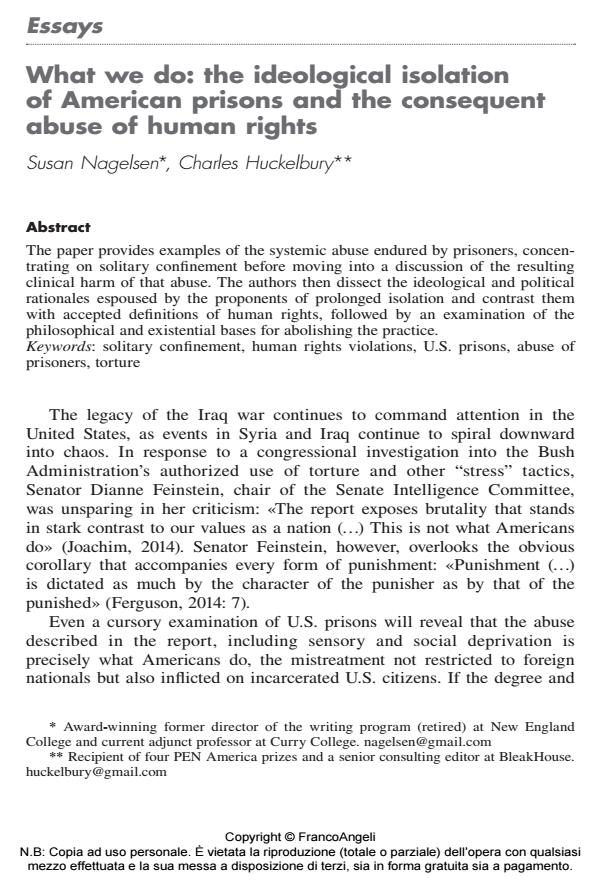What we do: the ideological isolation of American prisons and the consequent abuse of human rights
Titolo Rivista SICUREZZA E SCIENZE SOCIALI
Autori/Curatori Susan Nagelsen, Charles Huckelbury
Anno di pubblicazione 2015 Fascicolo 2015/2
Lingua Inglese Numero pagine 18 P. 17-34 Dimensione file 131 KB
DOI 10.3280/SISS2015-002003
Il DOI è il codice a barre della proprietà intellettuale: per saperne di più
clicca qui
Qui sotto puoi vedere in anteprima la prima pagina di questo articolo.
Se questo articolo ti interessa, lo puoi acquistare (e scaricare in formato pdf) seguendo le facili indicazioni per acquistare il download credit. Acquista Download Credits per scaricare questo Articolo in formato PDF

FrancoAngeli è membro della Publishers International Linking Association, Inc (PILA)associazione indipendente e non profit per facilitare (attraverso i servizi tecnologici implementati da CrossRef.org) l’accesso degli studiosi ai contenuti digitali nelle pubblicazioni professionali e scientifiche
The paper provides examples of the systemic abuse endured by prisoners, concentrating on solitary confinement before moving into a discussion of the resulting clinical harm of that abuse. The authors then dissect the ideological and political rationales espoused by the proponents of prolonged isolation and contrast them with accepted definitions of human rights, followed by an examination of the philosophical and existential bases for abolishing the practice.
Parole chiave:Solitary confinement, human rights violations, U.S. prisons, abuse of prisoners, torture
Susan Nagelsen, Charles Huckelbury, What we do: the ideological isolation of American prisons and the consequent abuse of human rights in "SICUREZZA E SCIENZE SOCIALI" 2/2015, pp 17-34, DOI: 10.3280/SISS2015-002003